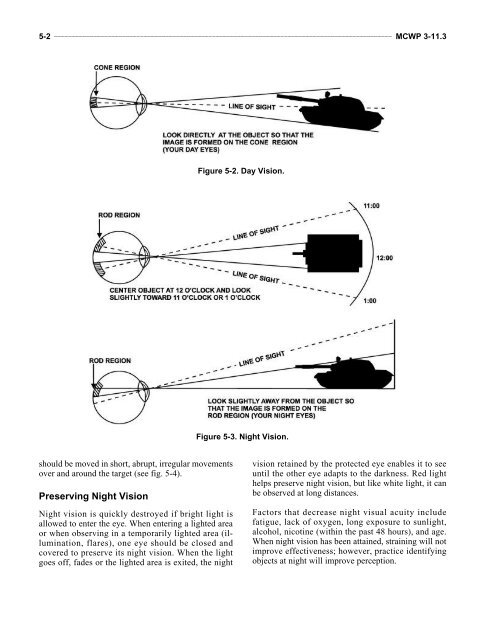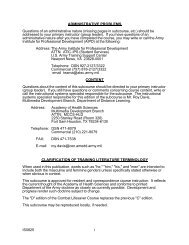MCWP-3-11.3-Scouting-and-Patrolling
MCWP-3-11.3-Scouting-and-Patrolling
MCWP-3-11.3-Scouting-and-Patrolling
You also want an ePaper? Increase the reach of your titles
YUMPU automatically turns print PDFs into web optimized ePapers that Google loves.
5-2 ______________________________________________________________________________________________ <strong>MCWP</strong> 3-<strong>11.3</strong>Figure 5-2. Day Vision.Figure 5-3. Night Vision.should be moved in short, abrupt, irregular movementsover <strong>and</strong> around the target (see fig. 5-4).Preserving Night VisionNight vision is quickly destroyed if bright light isallowed to enter the eye. When entering a lighted areaor when observing in a temporarily lighted area (illumination,flares), one eye should be closed <strong>and</strong>covered to preserve its night vision. When the lightgoes off, fades or the lighted area is exited, the nightvision retained by the protected eye enables it to seeuntil the other eye adapts to the darkness. Red lighthelps preserve night vision, but like white light, it canbe observed at long distances.Factors that decrease night visual acuity includefatigue, lack of oxygen, long exposure to sunlight,alcohol, nicotine (within the past 48 hours), <strong>and</strong> age.When night vision has been attained, straining will notimprove effectiveness; however, practice identifyingobjects at night will improve perception.



